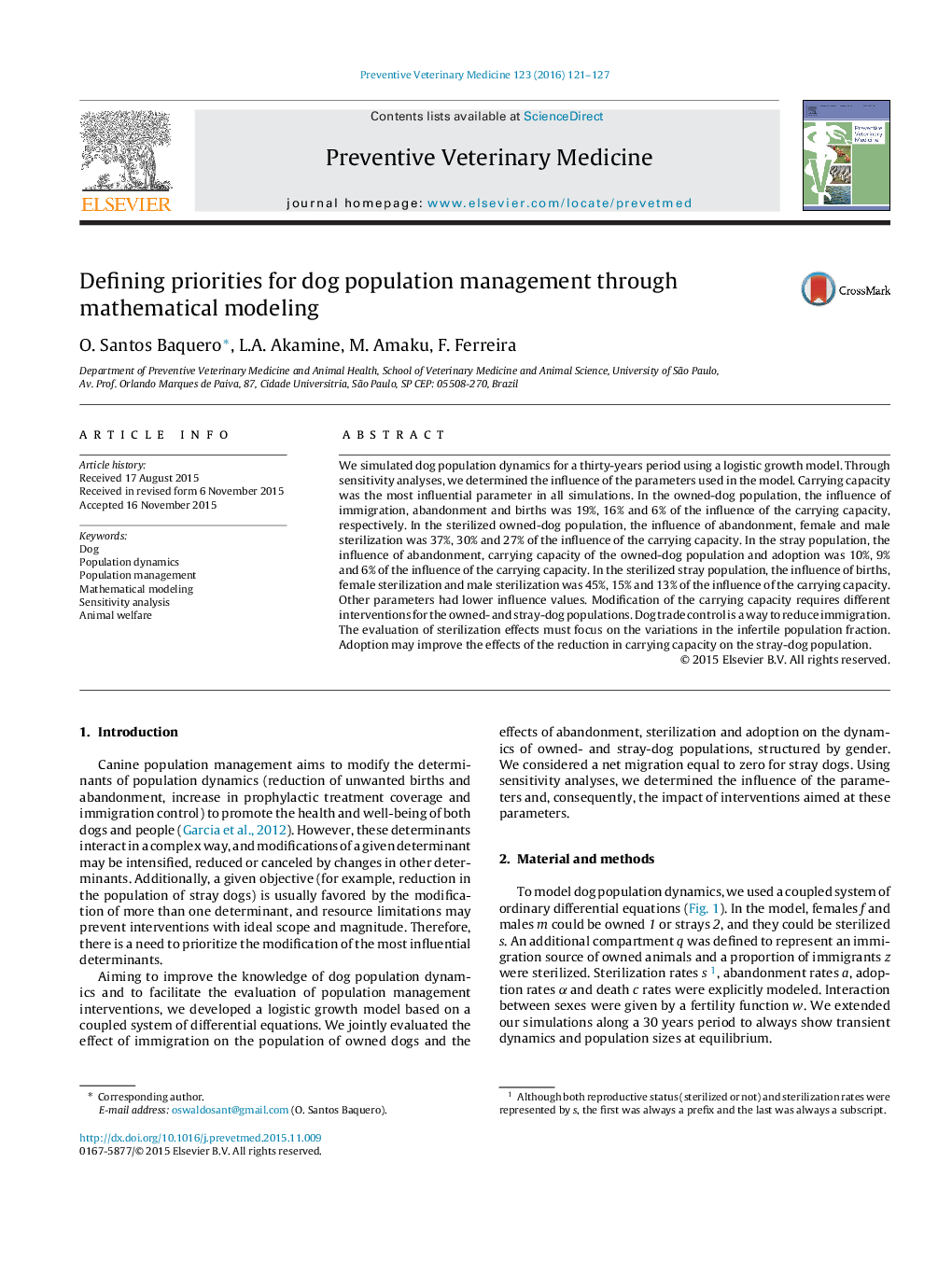| کد مقاله | کد نشریه | سال انتشار | مقاله انگلیسی | نسخه تمام متن |
|---|---|---|---|---|
| 5793172 | 1554165 | 2016 | 7 صفحه PDF | دانلود رایگان |
We simulated dog population dynamics for a thirty-years period using a logistic growth model. Through sensitivity analyses, we determined the influence of the parameters used in the model. Carrying capacity was the most influential parameter in all simulations. In the owned-dog population, the influence of immigration, abandonment and births was 19%, 16% and 6% of the influence of the carrying capacity, respectively. In the sterilized owned-dog population, the influence of abandonment, female and male sterilization was 37%, 30% and 27% of the influence of the carrying capacity. In the stray population, the influence of abandonment, carrying capacity of the owned-dog population and adoption was 10%, 9% and 6% of the influence of the carrying capacity. In the sterilized stray population, the influence of births, female sterilization and male sterilization was 45%, 15% and 13% of the influence of the carrying capacity. Other parameters had lower influence values. Modification of the carrying capacity requires different interventions for the owned- and stray-dog populations. Dog trade control is a way to reduce immigration. The evaluation of sterilization effects must focus on the variations in the infertile population fraction. Adoption may improve the effects of the reduction in carrying capacity on the stray-dog population.
Journal: Preventive Veterinary Medicine - Volume 123, 1 January 2016, Pages 121-127
